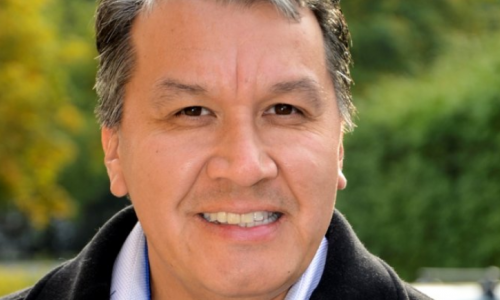
We all want to start the new year strong. We set new goals for ourselves so that we can continue to grow. The thought of being able to reinvent ourselves and start afresh is very motivating. Here are 4 tips to help start off your new year in the best way possible.
Gratitude is the quality of being thankful and the readiness to show appreciation. It is very easy to overlook gratitude because we live in such a fast-paced world, where we are under constant pressure to achieve and move on to the next goal. We don’t really want to take the time to reflect on the past because well, it's already in the past. Expressing gratitude can work wonders to shift your mindset and get you ready for the new year. Use the start of the year to reflect on how the previous year went. When looking back at your year, it is important to not only focus on your achievements, but to consider them. What goals did you achieve? Who had an impact on your life? What were some notable events? I realize that taking this extra time to reflect makes me appreciate the choices I made more. Aside from appreciating the good, I use this time to recall some of the bad. Instead of dwelling on any regrets, take it as a lesson. We are only human, and we will make mistakes along the way. But we can always learn from them and be better prepared for the future. And what better time to do this than in the new year.
I am a firm believer that your physical environment can impact your mindset, whether you realize it or not. Take some time out of your day to try out the KonMari method of tidying up. The KonMari method was started by Marie Kondo and has worked wonders for me when it comes to decluttering space. The 5 steps of this method are; first pick a category of items (study supplies), and then second step is to break them down into subcategories (pens, notebooks). The third step is to only keep items that either “spark joy,” which means to only keep the items that you “love” and “speak to your heart.” The fourth step after you’ve finished discarding is to organize and decide where to put them. Marie Kondo says it is important to tidy by category and not by location. It might seem more logical to tackle one area at a time, but tidying by category (clothes, books) is more efficient as it allows you to visualize the overall amount of each item you own. The final step is to do it all in one go and to follow the right order. “If you tidy up in one shot, rather than little by little, you can drastically, change your mindset” is what Marie Kondo swears by. This process can be trickier than expected, and for a materialist like me, it was hard to discard certain items. The thought of “But what if I need this later!” kept bugging me. But like how most skills require practice, tidying up is the same thing. I find that this process can also remind me of my new year goals: If something no longer was serving a purpose for me, I would not bring it into the new year. With more practice, I began to realize that seeing a neat space without clutter made me feel less overwhelmed and more motivated instead. So, whether it's your bedroom or your work desk, putting in the effort to declutter and tidy up can help you get in the right frame of mind to start off your year.
Setting goals for the start of the year is almost essential. It can help you define your priorities and organize the steps you need to achieve your goals. The key to successful goal setting is to have SMART goals. The acronym SMART refers to Specific, Measurable, Achievable, Relevant, and Time-Bound. Let's say that one of your goals this year is to read more (it was one of my goals at one point). But the goal of “reading more” is one that is vague, and overwhelming when we can’t visualize how we will achieve this goal. A SMART goal can help break down this process into smaller steps. Start by making the goal very specific. If you want to read more this year, how many books are you considering? Next, consider how to measure your progress. When it comes to reading, measuring your process can be recording how many books you have completed in a certain period. Making a goal achievable simply means making the goal realistic and within your ability. Goals should push us out of our comfort zone but should not be unattainable. The 4th step in a SMART goal is to consider why it's relevant to the big picture. Think about why you are setting this goal and how you want it to impact your life. Reading more books is not only a source of entertainment but also improves brain connectivity and increases vocabulary and comprehension. Time-bound simply refers to the target dates of your progress. For reading, this could be aiming to read half the book in 1 week and completing it at the end of the month. Setting a deadline can keep you on your toes to make progress.
Another strategy that can help you visualize the upcoming year is to use a vision board. A vision board is a visual representation of your goals. This can be a board with pictures, quotes or anything that inspires you. In my experience, I find that a vision board is helpful because it is a physical manifestation of goals that you can see in real life. It can help put you in a more positive mindset before you start your goals and serves as a boost of motivation whenever you are feeling lost. An visual overview of your goals combined with specific SMART goals can really serve as the drive you need at the start of the year.
Whether it’s a professional or personal goal, we all want to become better versions of ourselves in the new year. Life happens, and sometimes things do not always go according to plan, but by having a vision board to remind you of your values and by setting attainable goals that motivate you, you will be one step close to achieving your dreams.
Finally, a good way to wrap up this process is to partake in a mental cleanse. A mental cleanse can be defined as any activity that helps clear your mind to help you focus better. Some ways to do this are with meditation, deep breathing, or listening to a positive affirmation. Meditation is a good way to practice mindfulness, which is when you are fully present in the current moment without focusing on outside stressors. I find this especially helpful when I feel overwhelmed, as it helps me stay calm and focus on what I can do in the current situation. Another way I like to mentally cleanse is to listen to podcasts that uplift me, to refocus my mind in a positive way. Some of my favorites are “The Psychology of your 20s” by Jemma Sbeg and “Very Human” by Aisyah Shofi. Self-help podcasts are especially relaxing because the core message they have is that you should be taking care of yourself in order to be your best self. This serves as a reminder that if we want to achieve great things, we always come back to ourselves at the end of the day, which is why I think starting off the year with this mindset is essential for not only achieving our goals but taking care of our wellbeing.
People’s first impression of starting a new year is that it's a time to restart and gear up for what's to come. But I also think the new year should include room for expressing gratitude to yourself and to others. In this fast-paced world where we are constantly moving on to the next new thing, it is easy to lose yourself, which is why I think starting off the year with reflection can motivate you even more at the start of the year, and help you achieve the personal goals you set yourself to do. One final thing to remember is it is okay if things do not always go according to plan. It is only human to make mistakes. Learn to realize that every stumble and mistake you made in previous years brought you closer to where you need to be today. I wish you all the best this year, and I hope you all become one step close to your goals!
Beyond the Blog
-
Check out the OLC On the Spot Podcast on Goal Setting



















